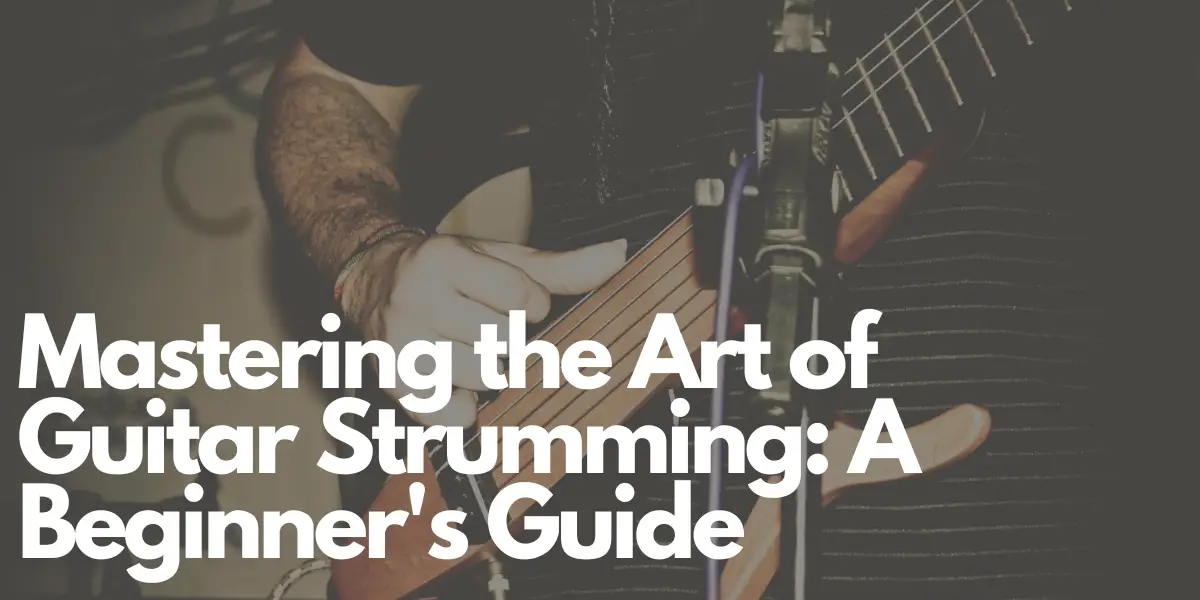Strumming a guitar is like weaving magic through strings, transforming them into beautiful melodies. Whether you’re an aspiring guitarist or just picking up the instrument for the first time, learning how to strum properly is a fundamental skill you can’t afford to overlook. In this beginner’s guide, we’ll take you through the steps of mastering the art of guitar strumming.
Step 1: Finding Your Hand’s Sweet Spot
Before you embark on your strumming journey, it’s crucial to get your hand placement right:
- Hold the guitar with your dominant hand – for most people, it’s the right hand, but left-handed players should hold it with their left.
- Position the guitar body comfortably against your torso, ensuring it stays securely in place.
- Extend your strumming arm’s elbow slightly, maintaining a relaxed posture.
- If you plan to fret chords while strumming, place your thumb on the back of the guitar’s neck.
Step 2: The Perfect Pick Grip
While some guitarists prefer fingerstyle playing, using a pick is the most common approach for strumming. If you opt for a pick:
- Grip the pick between your thumb and index finger.
- Allow only a small portion of the pick to protrude beyond your thumb.
- Angle the pick slightly downward, towards the guitar strings.
Step 3: Downward Strumming – The Building Block
Let’s start with the basics – the downward strum. This is the foundation upon which your strumming skills will be built:
- Position your hand slightly above the guitar strings, with the pick just above them.
- Initiate the strum by moving your hand downwards, starting from the highest (thinnest) string (1st string) and ending at the lowest (thickest) string (6th string).
- Keep the motion smooth and even, aiming to strike all the strings in one fluid motion.
Step 4: The Upward Strum
To complete your strumming arsenal, it’s time to add the upward strum into your repertoire:
- Position your hand above the guitar strings once more, but this time, your pick should be below the strings.
- Execute an upward strum, beginning from the lowest (6th string) and progressing to the highest (1st string).
- Maintain a relaxed hand and a consistent, steady motion.
Step 5: Harmonizing Downward and Upward Strums
Now that you’ve got the hang of both downward and upward strumming, it’s time to blend them into harmonious patterns:
- Begin with a straightforward four-beat strumming pattern: Down, Down, Up, Up.
- Practice this pattern at a slow pace, emphasizing each beat, and gradually increase your speed as your confidence grows.
- Don’t hesitate to experiment with different strumming patterns and rhythms to match the song or style you’re playing.
Step 6: The Art of Dynamics and Control
Strumming isn’t just about hitting the strings; it’s about controlling the dynamics and emotions of your music:
- Vary your strumming intensity to create dynamics, allowing for soft and loud sections within your playing.
- Experiment with different pick angles and hand positions to produce a rich palette of tones.
- Practice muting or palm muting techniques to control sustain and create distinctive percussive effects.
Conclusion: Your Musical Journey Begins
In conclusion, learning how to strum a guitar is a foundational skill for any guitarist. Start with these basics, dedicate time to regular practice, and don’t shy away from experimenting with various strumming patterns and techniques. As you hone your strumming skills, you’ll discover that it’s not merely about playing chords; it’s a means to express your musicality and infuse depth into your music. So, grab your guitar, pick, and embark on a melodic journey – it’s time to start strumming!
Author: Mike P
Hi! My name is Mike! I’ve been an apartment producer/musician for 10+ years. I’ve played in punk bands, released EDM tunes on Beatport and iTunes, and have a semi-successful stock music portfolio. Read more…


